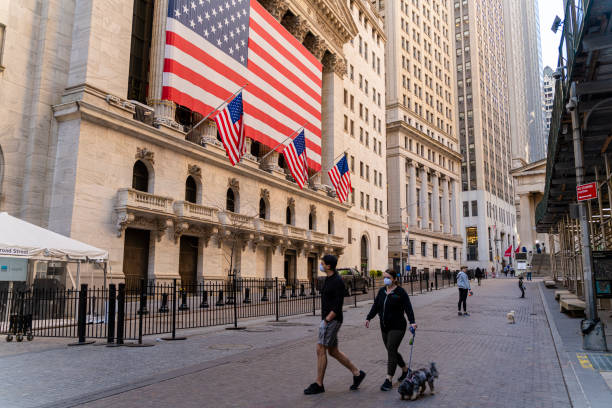- Mexican Peso trades near lows of the day, USD/MXN above 19.50.
- Weak Mexican auto production and export data highlight economic slowdown, influencing market sentiment.
- Banxico may consider lowering borrowing costs at the August 8 meeting due to slower growth and lower inflation.
The Mexican Peso extended its daily losing streak to four against the Greenback. It remained above the psychological 19.00 figure for the third straight day after the exotic pair breached the previous year-to-date (YTD) high of 18.99. A light economic docket on both sides of the border keeps the Peso adrift to market mood dynamics. The USD/MXN trades at 19.50, climbing over 1%.
Risk appetite improved, yet the Peso failed to gain traction. Nevertheless, geopolitical risks could shift sentiment sour and spark a flock to safety, weakening most emerging market currencies against the US Dollar.
Auto Production in Mexico grew slower than in June, while Auto Exports plunged. This underscores the ongoing economic slowdown, which coupled with lower inflation readings can allow the Bank of Mexico (Banxico) to lower borrowing costs at the upcoming meeting on August 8.
In the US, the latest Institute for Supply Management (ISM) Services PMI exceeded estimates, hinting that the economy remains solid amid the dip in manufacturing activity, as reported by the ISM last Thursday.
The data calmed US recessionary woes as market players now expect just 110 basis points (bps) of monetary policy easing by the Federal Reserve (Fed) in 2024, compared to 150 bps a day ago.
Earlier, the US Balance of Trade posted a narrower deficit than last month, yet it missed the mark.
Daily digest market movers: Mexican Peso on the backfoot despite market mood improvement
- The Instituto Nacional de Estadistica Geografía e Informatica (INEGI) revealed that Auto Production in July rose 2.7% MoM, down from 3.8% in June. Auto Exports sank from 1.5% in June to -1.6% MoM.
- On Thursday, Mexico’s inflation is expected to rise from 4.98% to 5.57% YoY, while underlying figures are foreseen to dip from 4.13% to 4.02% YoY.
- The US Bureau of Economic Analysis (BEA) featured July’s Balance of Trade, which came at $-73.1 billion, down from $-75 billion, but missed the consensus of $-72.5 billion.
- US Exports and Imports grew from $262 billion to $265.9 billion and from $337 billion to $339 billion, respectively.
- Monday’s ISM Services PMI improvement from July faded fears that the US economy might hit a hard landing instead of a soft landing.
- The CME FedWatch Tool shows the odds of a 50-basis-point interest rate cut by the Fed at the September meeting at 86.5%, up from 74% last Friday.
Technical analysis: Mexican Peso depreciates sharply as USD/MXN rises above 19.30
The USD/MXN uptrend remains intact once it crosses the 19.00 psychological figure, opening the door for further upside. Momentum favors buyers, as depicted by the Relative Strength Index (RSI), which is bullish at overbought territory. Although this could pave the way for a pullback, once RSI normalizes, the trend could resume upwards.
The first resistance would be the psychological 19.50 mark. Once cleared, the next stop would be the 20.00 mark, followed by the current YTD high at 20.22.
Conversely, the USD/MXN first support would be the 19.00 mark. A breach of the latter will expose the August 1 swing low of 18.42, followed by the 50-day Simple Moving Average (SMA) at 18.17.

Banxico FAQs
The Bank of Mexico, also known as Banxico, is the country’s central bank. Its mission is to preserve the value of Mexico’s currency, the Mexican Peso (MXN), and to set the monetary policy. To this end, its main objective is to maintain low and stable inflation within target levels – at or close to its target of 3%, the midpoint in a tolerance band of between 2% and 4%.
The main tool of the Banxico to guide monetary policy is by setting interest rates. When inflation is above target, the bank will attempt to tame it by raising rates, making it more expensive for households and businesses to borrow money and thus cooling the economy. Higher interest rates are generally positive for the Mexican Peso (MXN) as they lead to higher yields, making the country a more attractive place for investors. On the contrary, lower interest rates tend to weaken MXN. The rate differential with the USD, or how the Banxico is expected to set interest rates compared with the US Federal Reserve (Fed), is a key factor.
Banxico meets eight times a year, and its monetary policy is greatly influenced by decisions of the US Federal Reserve (Fed). Therefore, the central bank’s decision-making committee usually gathers a week after the Fed. In doing so, Banxico reacts and sometimes anticipates monetary policy measures set by the Federal Reserve. For example, after the Covid-19 pandemic, before the Fed raised rates, Banxico did it first in an attempt to diminish the chances of a substantial depreciation of the Mexican Peso (MXN) and to prevent capital outflows that could destabilize the country.






.jpg)
